Photo Gallery and Blog 2017
Screech Owl
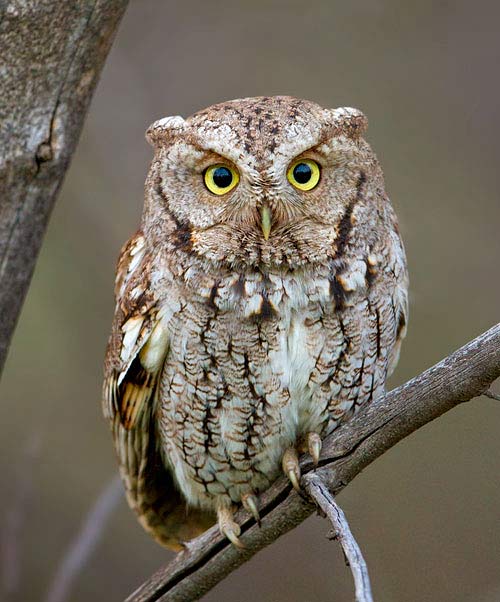
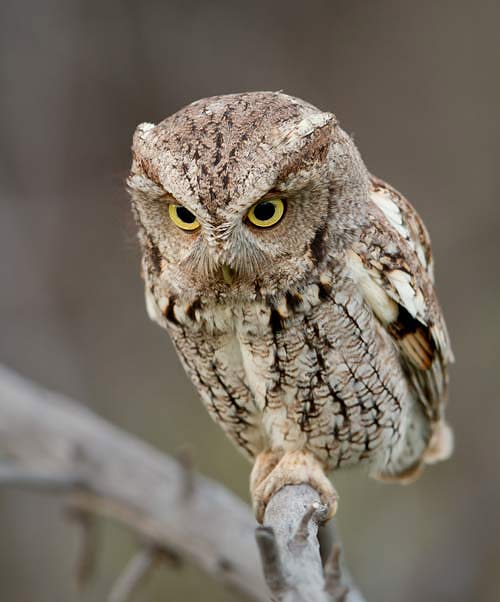
The screech owls that I photographed extensively in previous years are still around.
I enjoy watching them.
This is the same female owl that nested here in previous years.
I got a couple photos in the fading light at dusk as she was hunting.
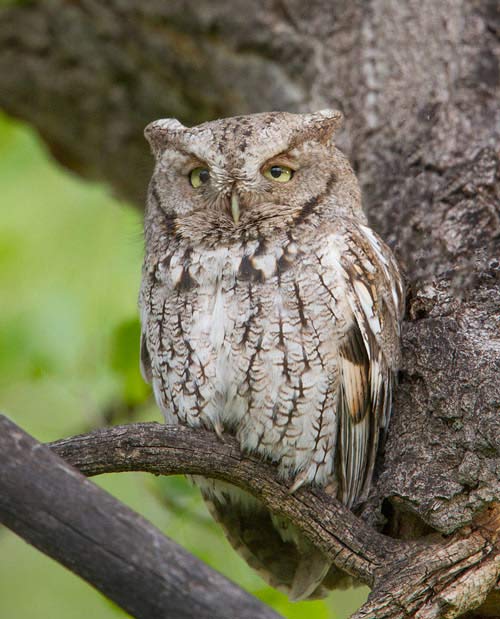
Sometimes she just sits in a tree and looks wise.
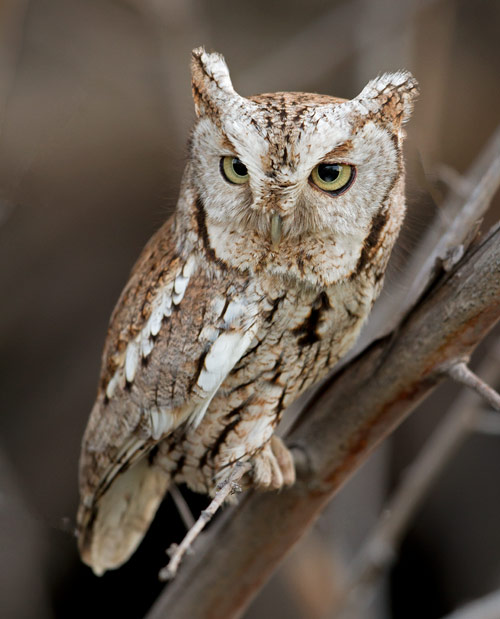
This is the male of the pair.
Sometimes he has that furrowed-brow look with raised ear tufts, and other times he looks much like the female.
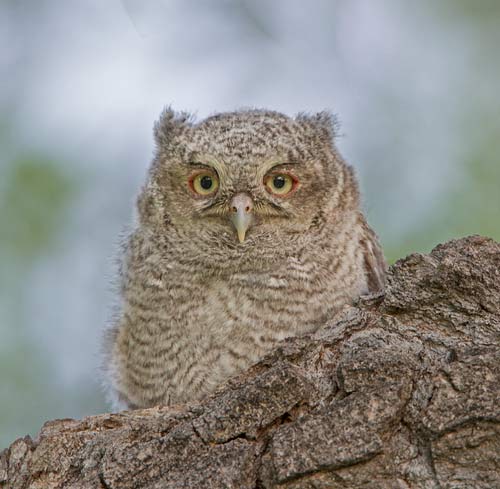
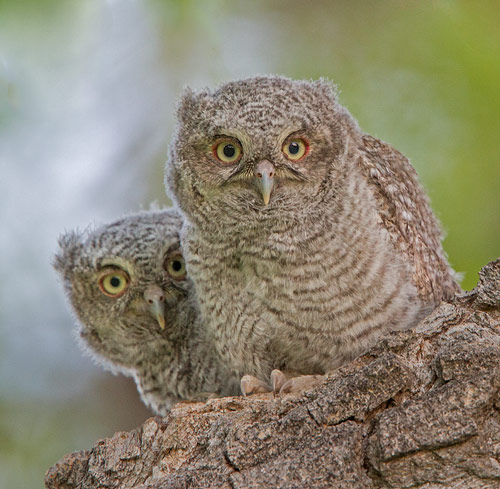
One evening I saw an owlet for the first time.
It was sitting on a tree just above its nest hole.
Then pretty soon another one appeared behind its sibling.
They moved their heads around in circles and bobbed up and down.
They are so fuzzy and cute.
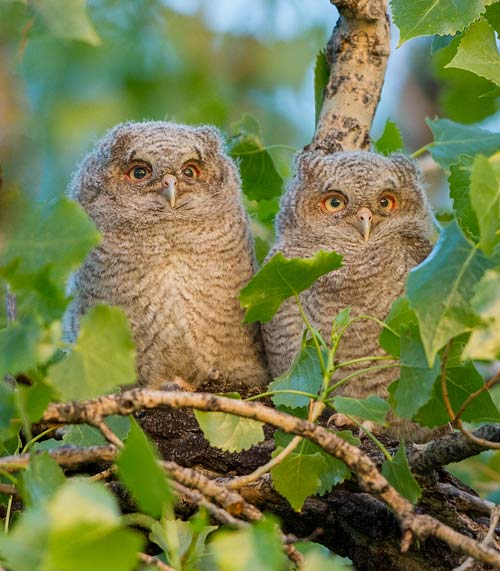
Two days after they first appeared, the two owlets were sitting side-by-side in a different tree, only visible through a gap in the leaves.
They sat there and snoozed during the day and only woke up at dusk.
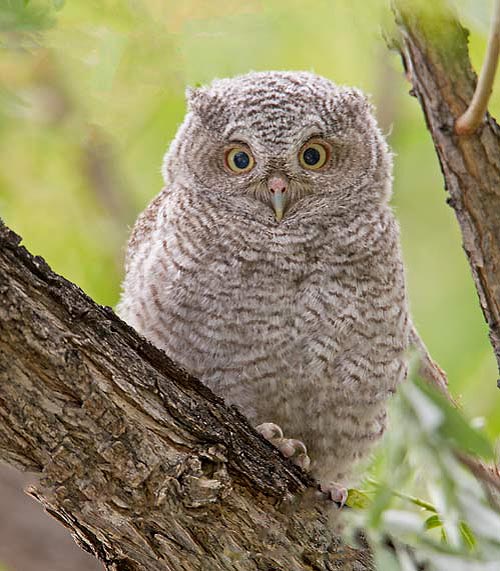
After two more days, the owlets were walking around in the trees with ease, hopping from branch to branch.
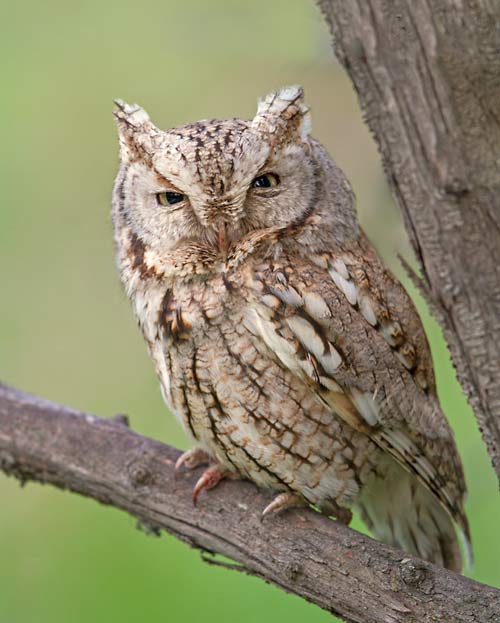
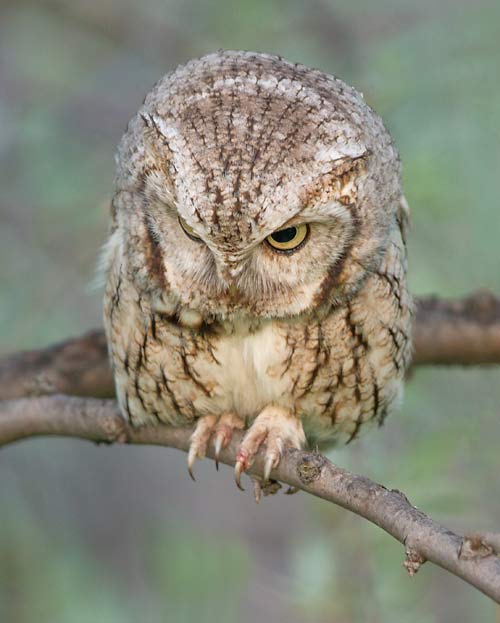
Both adults were actively hunting for food for their owlets.
"Actively hunting" means they sit motionless on a low branch and stare intently at the ground,
watching and listening for any signs of a rodent.
They both have reddish feet from the previous course of dinner.
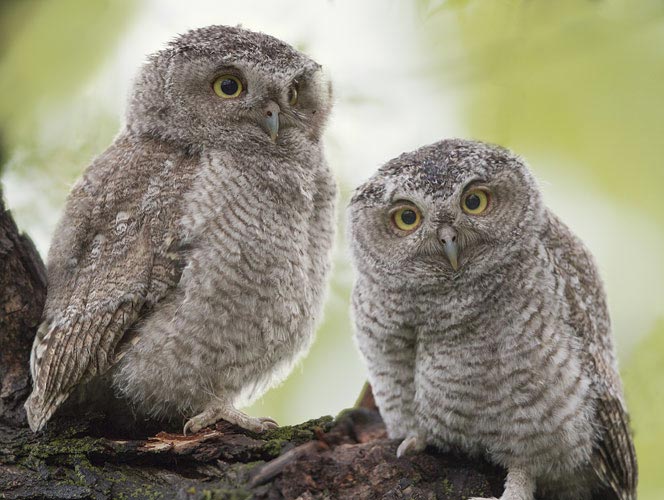
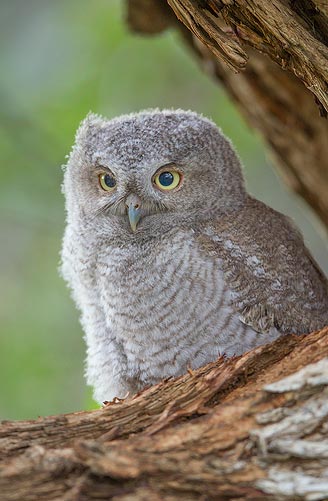
Just nine days after emerging from their nest, their wings have grown enough so the three owlets can fly from tree to tree.
Their flight skills are not polished yet. Landings usually involved falling forward into a face plant.
This day the owlets liked to sit on the branch and do their roundy-round head dance, which is fun to watch but not so good for long-exposure photos.
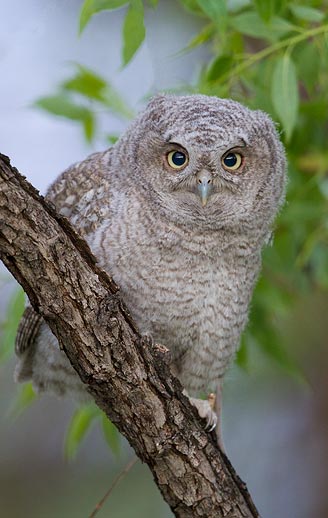
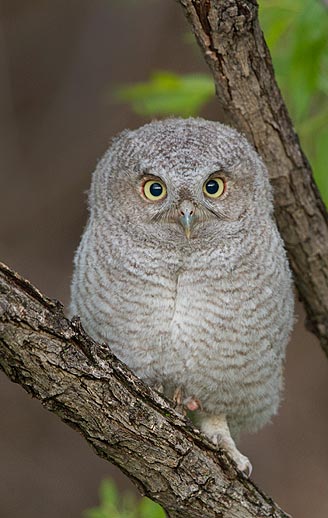

The next evening, the owlets were actively flying between trees and exploring the branches.
Sometimes they would be in places not obscured by twigs and leaves so I could get a few clear photos.
Most of the time they look at each other, the ground, other birds, and everything other than me, so I have to wait quite a while to take the photos.
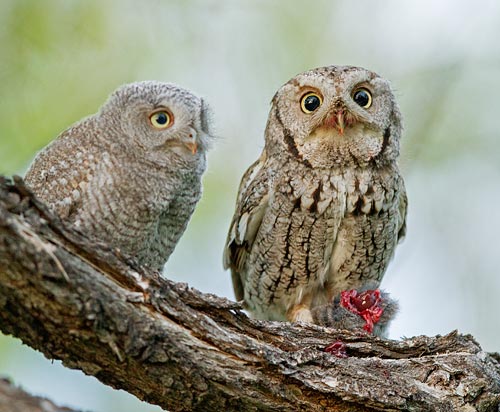

The adult owls diligently look for food for their brood.
It was well after sunset when the mother owl got a fresh, juicy, all-organic dinner from Vole Foods.
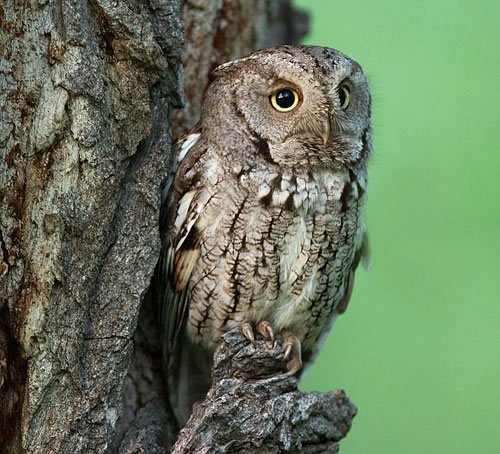
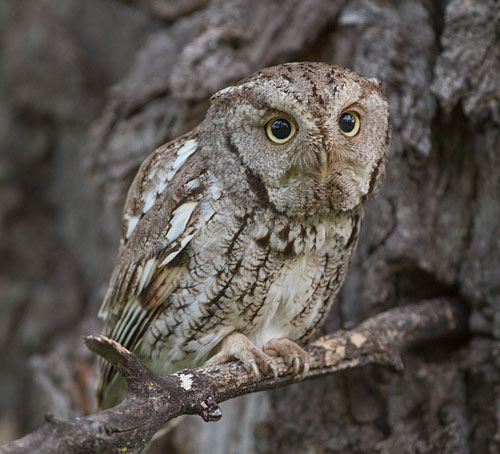
It can be really hard to find an owl because their feather pattern looks so much like tree bark.

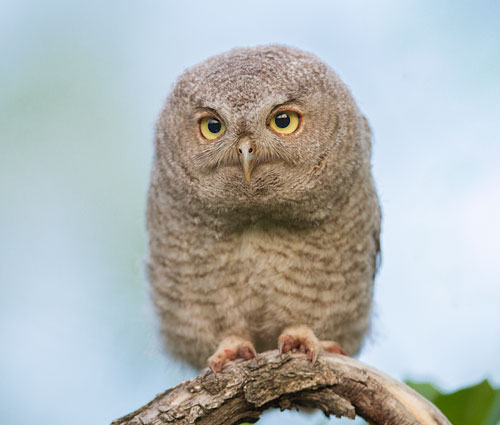
Occasionally they will oblige the photographer by perching on a nice clear spot without twigs in good light.
Usually they don't give a hoot about me.
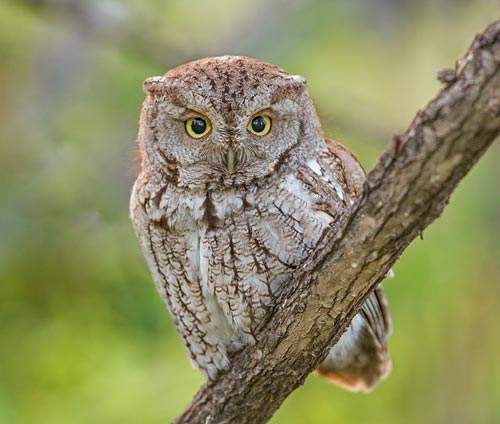

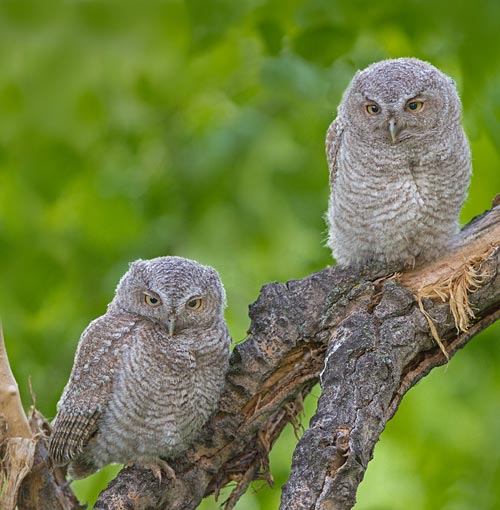
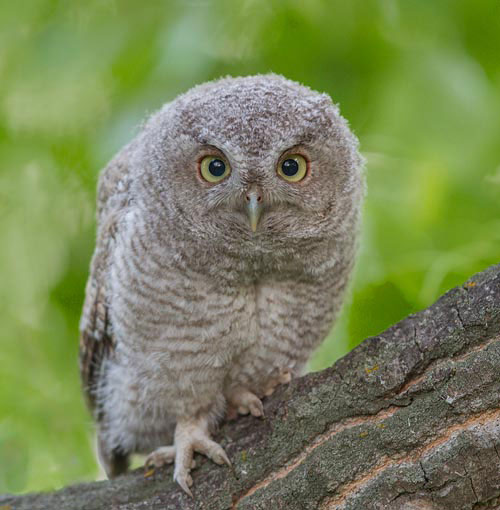
After a few weeks, the owl family has settled into a nocturnal routine.
They all snooze until 8pm, then wake up and get active just as the light fades.
Cedar Waxwing

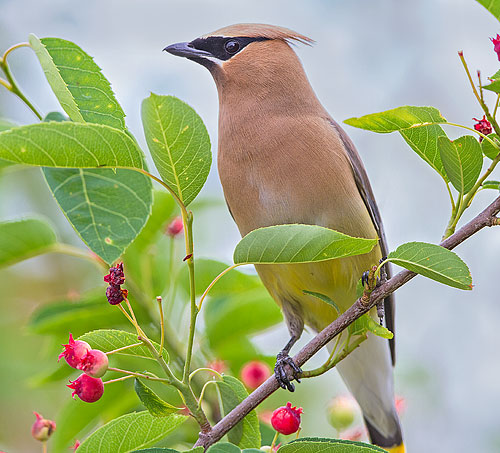
In mid June my backyard serviceberry tree bears its fruit and becomes very popular with birds for a few days.
I have learned to watch for the waxwings among all the voracious robins.
Sure enough, two waxwings appeared on a day with nice cloudy light and I had one afternoon to try to photograph them.
One day later, the tree was stripped of berries and the birds had deserted it.
Burrowing Owl
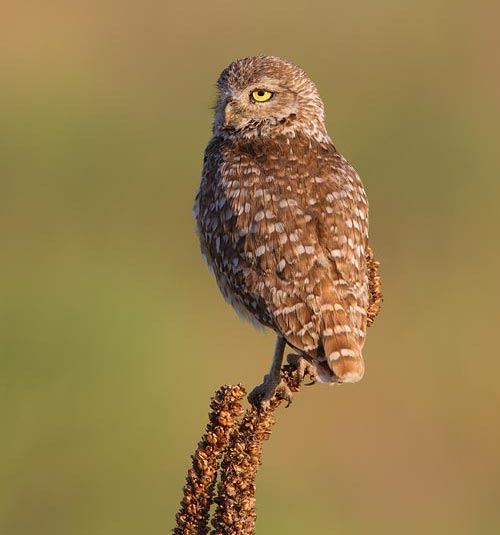
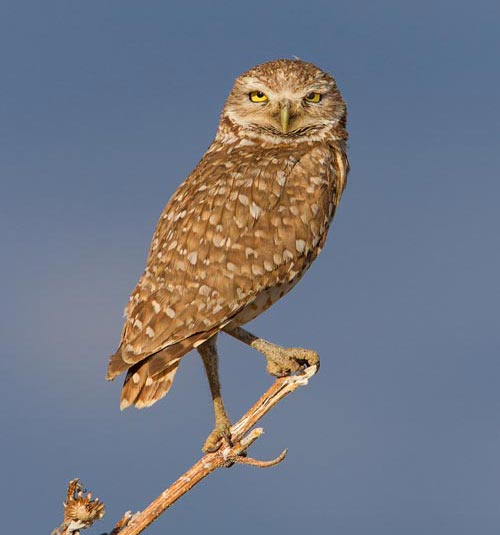
One pair of burrowing owls returned to the same area as last year.
The owls like to sit on roadside weeds that work well for photos.

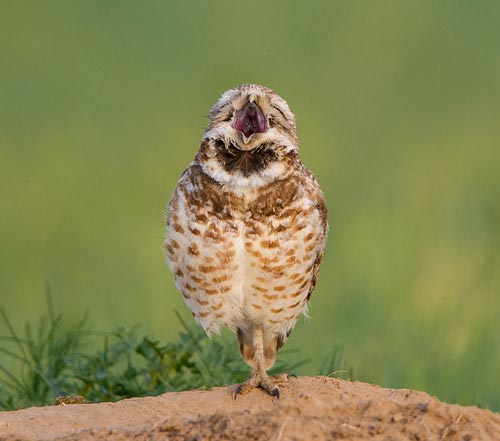
Standing around on one leg all day gets boring after a while.
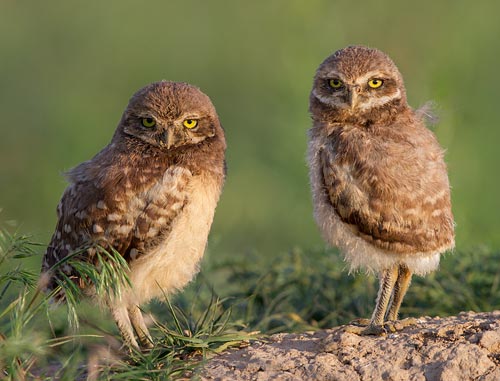
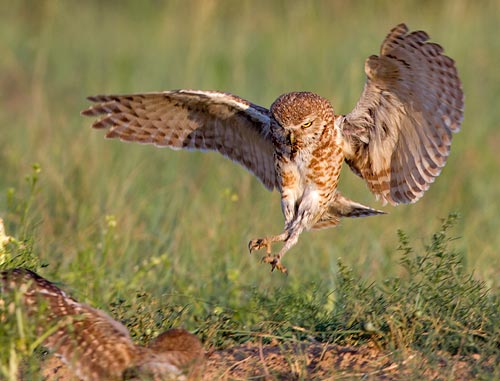
Usually the owlets just stand around near a prairie dog hole, but they come running when a parent arrives carrying a bug.
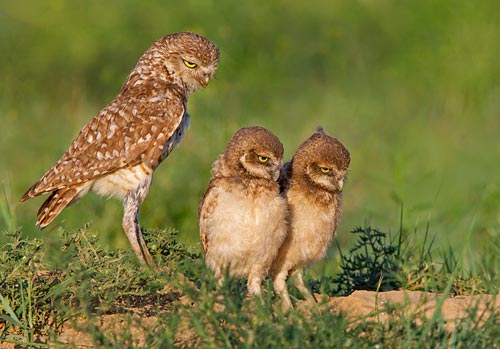
Where's Waldo? Still down there?
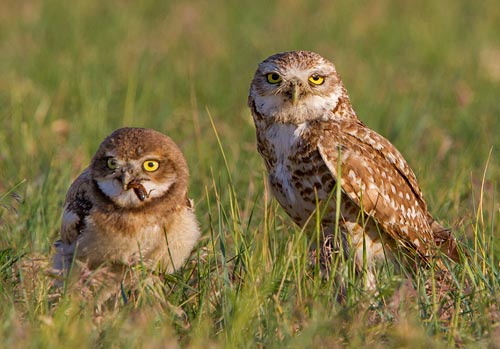
This lucky owlet just got a tasty beetle for dinner.
Western Bluebird
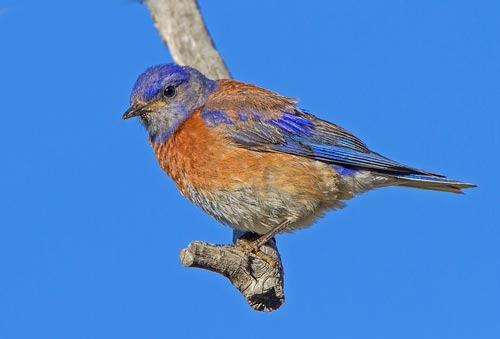
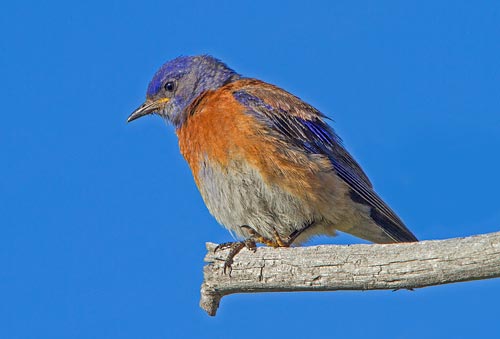
I don't see many western bluebirds in Rocky Mtn National Park so it was nice to find this one.
The nest hole was hidden on the back side of a pine tree but sometimes he would pause briefly on a dead branch on the way in or out of the nest.
Mountain Bluebirds
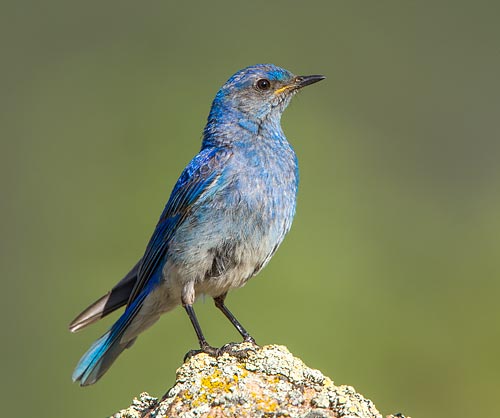
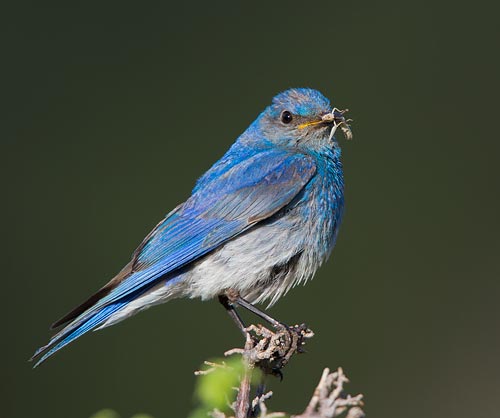
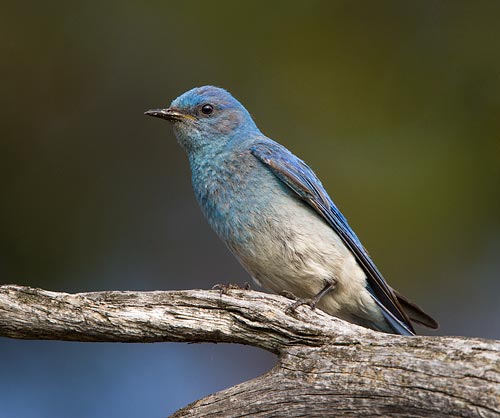
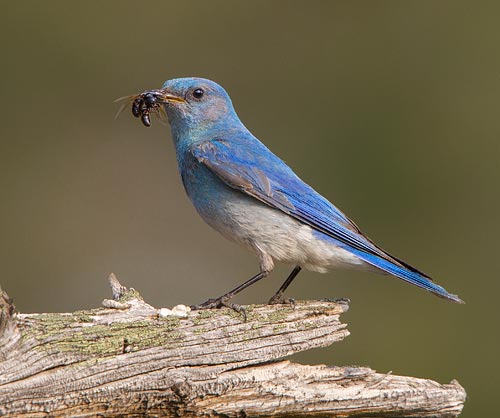
The last several years have had a shortage of bluebirds.
Either I didn't see any at all, or they tried to nest and it failed. This year I was happy to find several successful nests with cooperative birds.
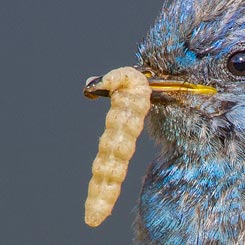
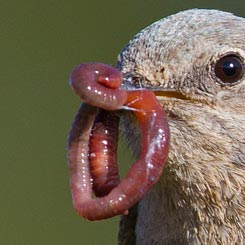
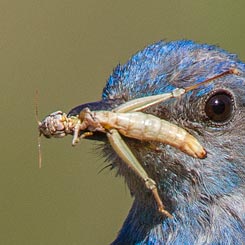
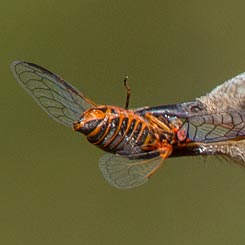
After spending several hours watching the bluebirds actively feeding their chicks, I am always impressed by their ability to find food so rapidly.
It only takes them a few minutes to find another bug and bring it to the nest.
They found an assortment of caterpillars, beetles, worms, and grasshoppers.
I sure don't see any of these bugs when I'm walking around in the forest.
Sometimes they perch on a tree for a little while, then suddenly dive to the ground and grab something.
I have had them fly over and grab a bug from the ground between my tripod legs.
Watching through the viewfinder, I can see the bugs still squirming around in the bird's beak, just before they become baby bird chow.
White-tailed Ptarmigan Chicks
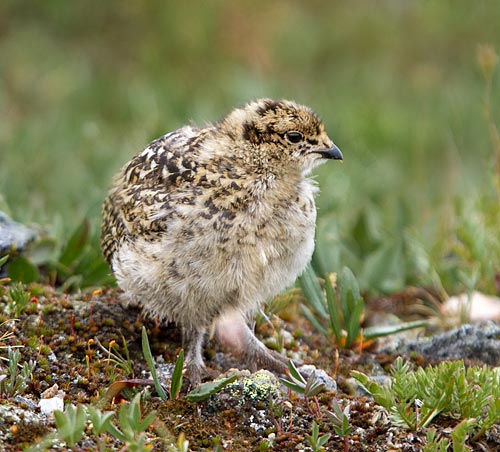
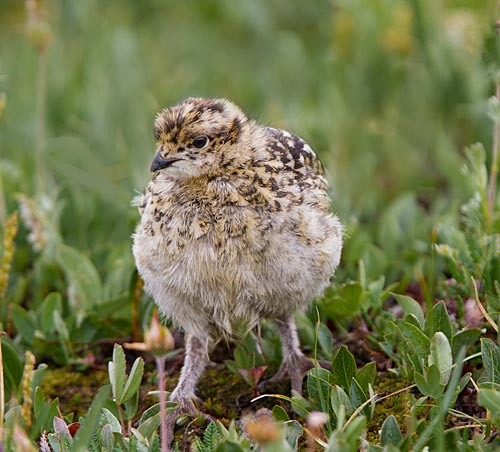
White-tailed ptarmigan live on the tundra year-round.
Their mottled feathers look very much like lichen-covered tundra rocks which makes them extremely hard to see.
Their chicks hatch in July, and they are hard to find too.
This brood had about six chicks.
They were out foraging for food among the tundra plants.
I just stood still and let them wander around me.
They aren't very big and were usually obscured by the vegetation, so getting a clear photo was difficult.
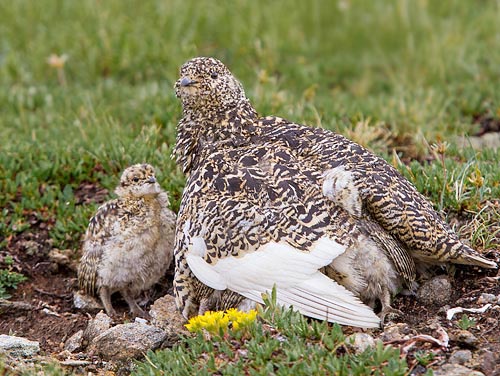
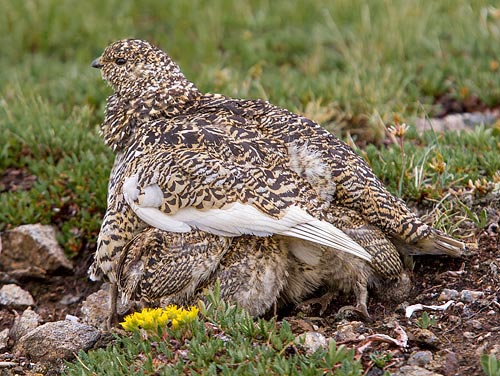
Then one-by-one, the chicks walked back to their mom, and snuggled under her wings.
Total Solar Eclipse
You have probably heard about the total solar eclipse that swept across the country on August 21.
The last one visible in this country happened in February 1979 so it has been a long time coming.
A few college buddies and I drove to cold Manitoba to see that and I have been waiting 38 years for this one.
The relentless media hype created eclipse mania and a massive migration of people into the totality zone.
I never dreamed the biggest obstacle to seeing it would be crowds and traffic.

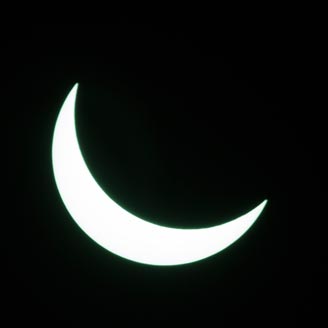

Of course I had to photograph it. You need a long lens because the sun isn't nearly as big as it seems, but no problem, I have one.
At first the moon nudged into the edge and very slowly crept across the sun. This process took about 80 minutes.
Even when the moon had obscured 2/3 of the sun, the light on the landscape looked perfectly normal and the darkening was imperceptible.
These three photos of the partial phase show it with 40, 15, and 3 minutes left before totality.
During the last ten minutes, the light looked strange.
The ominous dark western sky and chill in the air made it feel spooky as the darkening accelerated.
The remaining crescent continued thinning until the last bit of sun winked out. Totality!
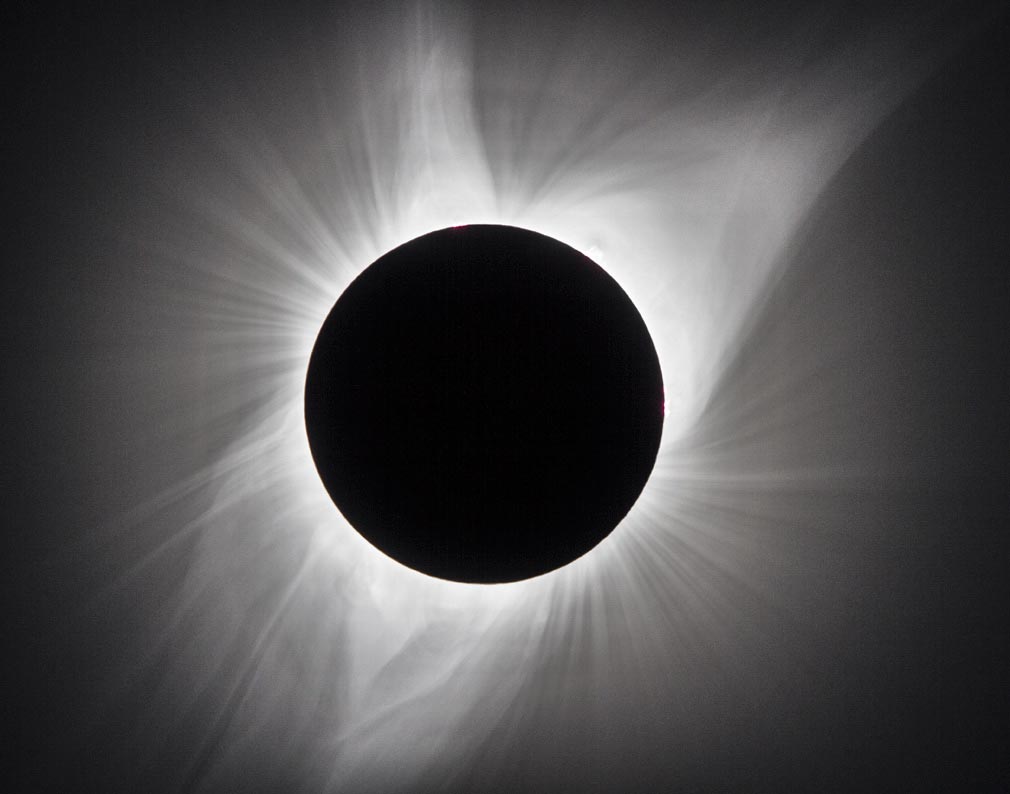
A long exposure records the ethereal swirls of the white hot corona.
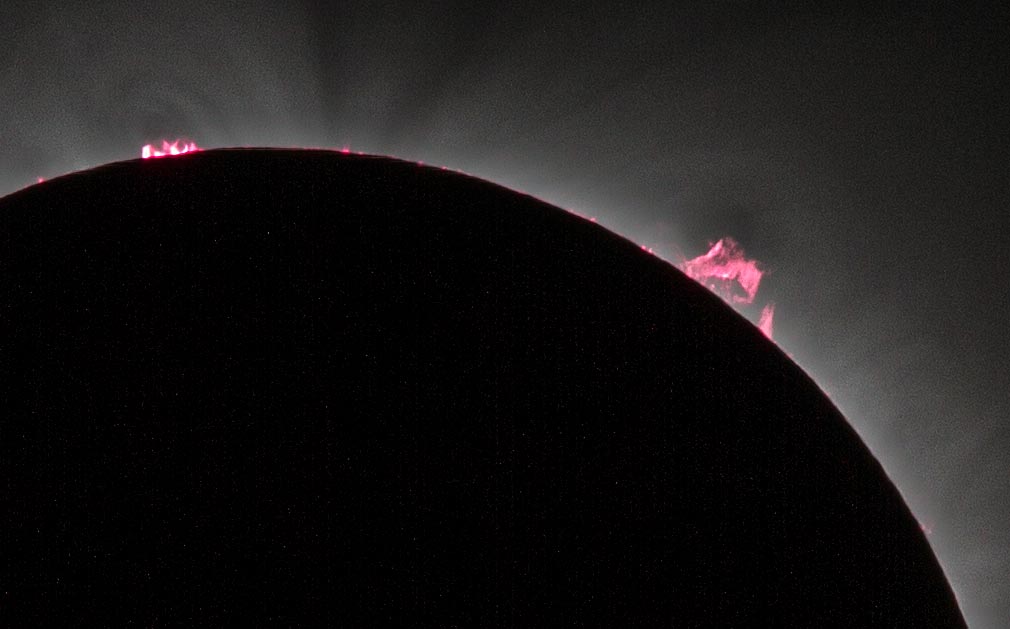
A short exposure lets you see the red solar prominences on the surface of the sun.
Comparing the size of that big red one to the size of the whole sun indicates it is about 32,000 miles tall.
That's like four earths.
And as prominences go, this is a relatively small one.

During totality the landscape was dark but still enough light to see.
I could see Venus but no stars.
There was an orange glow on the horizon like predawn twilight except this was all the way around.
After two and a half minutes, the first rays of direct sun returned giving this view called the "diamond ring" effect.
The light intensity increased very rapidly and within a few minutes things seemed almost normal again.
There was another 80 minutes of partial but that was really anticlimactic after experiencing totality.
Coyote
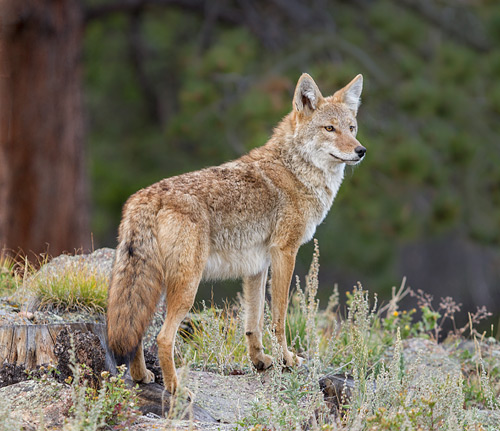

Early in the morning I saw this coyote jogging along the road.
It was headed to this mule deer carcass for breakfast.
The carcass was a few days old and the good parts had already been taken.
This coyote picked the last bits off the ribs.
It really wasn't gross but the crunching sounds were a bit disturbing.
Bull Elk
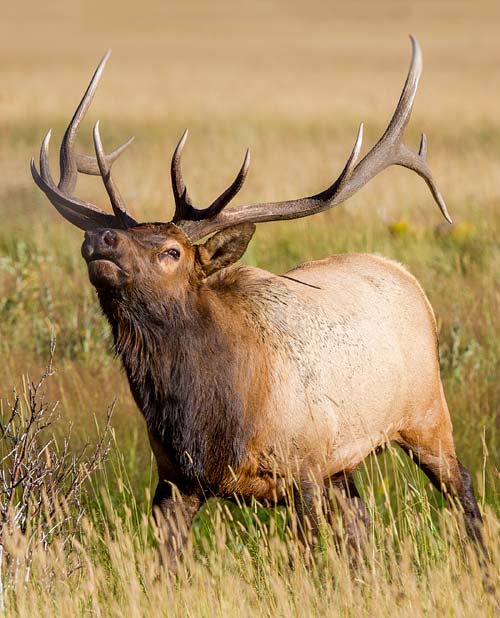
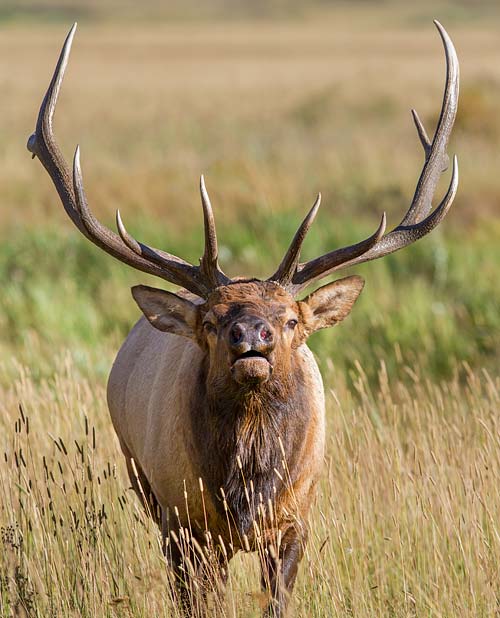
In late September the elk start the rut, their annual mating ritual.
The biggest bulls gather their group of cows, called a harem.
Then the bulls strut around with their head tilted back to show off their antlers, trying to impress the cows.
The cows don't seem excited but I guess it works for them.
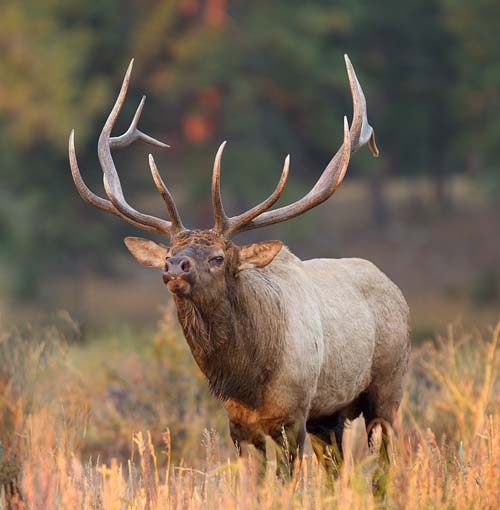
Early in the morning, this bull was still busy supervising his harem.
Those two white spots on his upper lip look like buck teeth.
Actually, elk don't have upper front teeth at all.
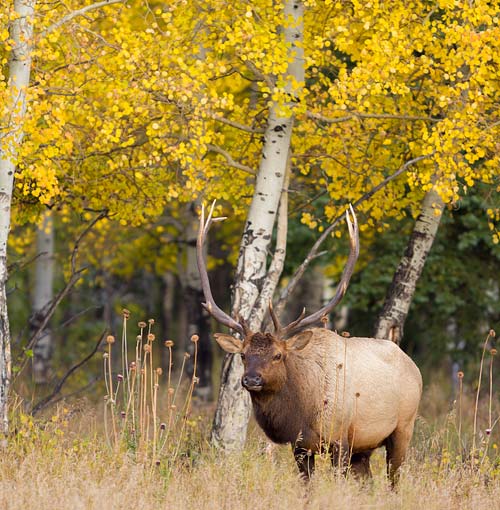
The rut winds down pretty fast. This bull was more intent on eating than rutting. At least he picked a photogenic background.
Wood Duck
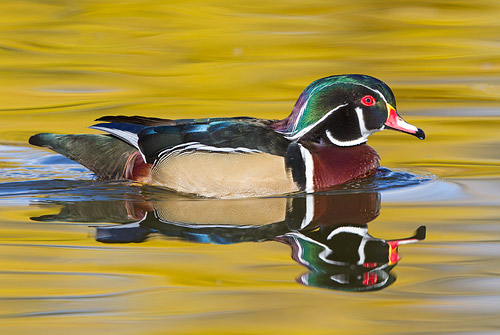
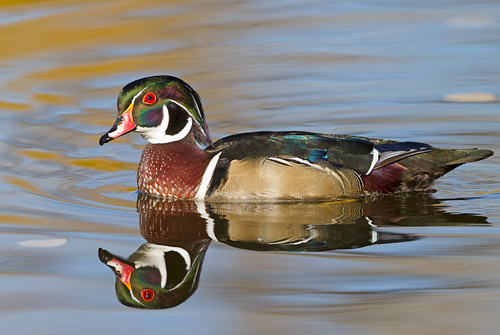
Wood ducks drakes are very elegant with their iridescent multicolored plumage and red eyes.
It makes an especially nice photo when one paddles through a reflection of yellow autumn leaves.
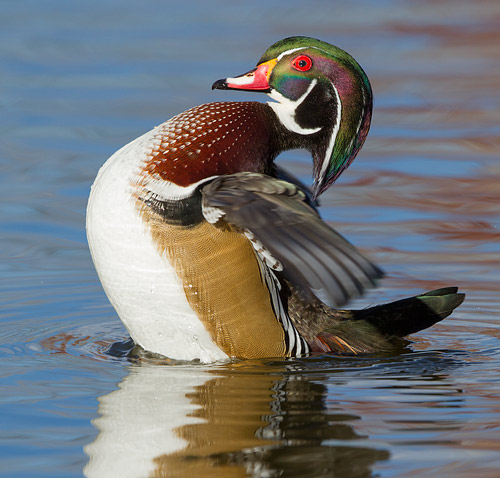
Occasionally a duck will rear up and flutter its wings.

His intricate feathers are precisely arranged like a perfect hairdo.
Mule Deer Buck
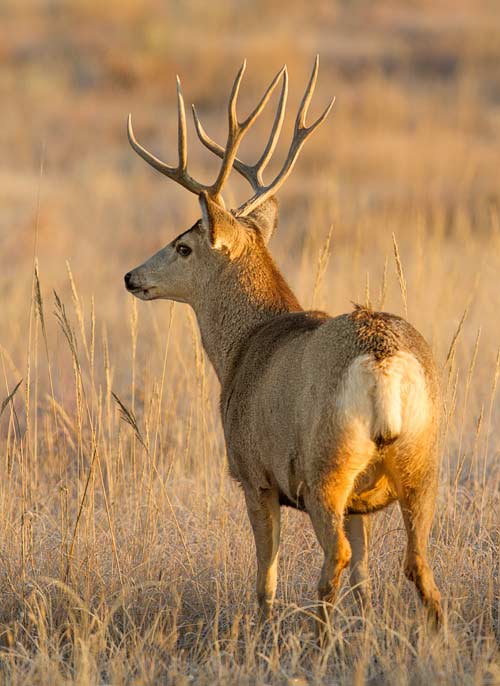
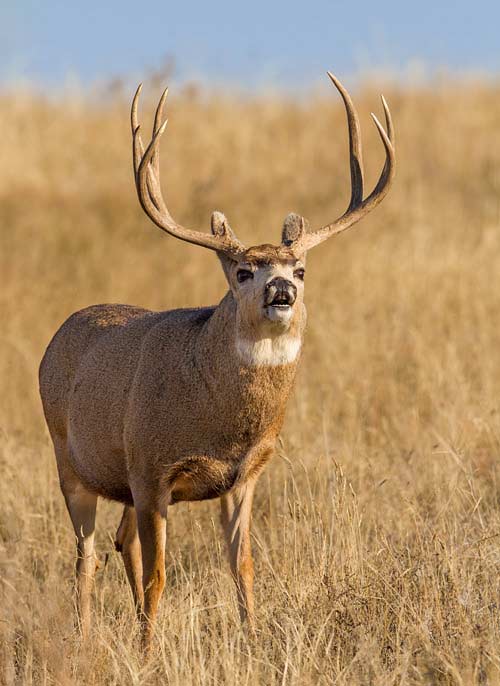
It is mating season for the mule deer in mid November.
That funny curled-lip expression is called Flehmen Response.
Bucks do this to sample the odor of urine from the does.
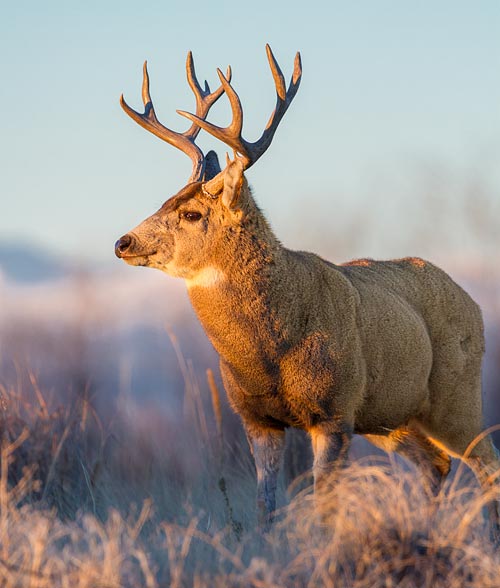

This cooperative buck stopped and posed for me on this roadside hill just after sunrise.





































































